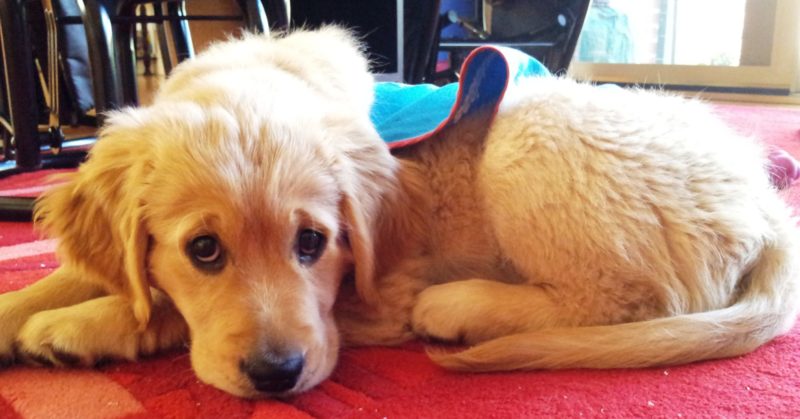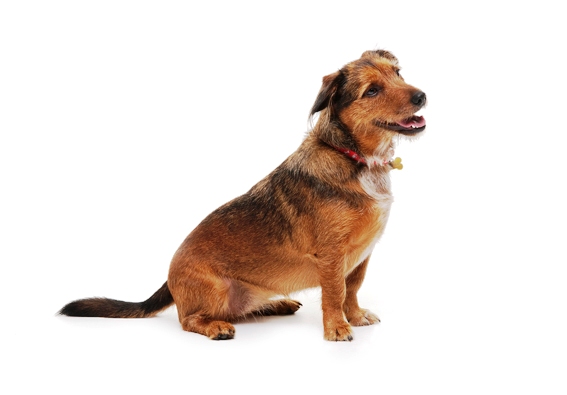Is your pet left or right-pawed? And does it matter?
Humans have a preference for which hand they favour but does your pet?
What about your dog’s tail wagging or even their leg-lifting habits?! Lefties, right-preference or couldn’t care less?

Have you ever watched your cat or dog to see which paw they use most? Like us, they are able to use both for most jobs. Opening a door, for instance, or simple tasks like knocking your best ornaments off the mantlepiece can easily be completed using both paws!
When it comes to more dextrous tasks, however, such as retrieving a favourite toy or a morsel of food from under the sofa, many cats and dogs will show a preference for one paw over another. Is your pet left or right-pawed?
Clyde, one of my cats (who lived to 21 years!), had a definite preference for using his left paw. Combined with a definite preference for stealing food whenever possible!
.
Not all pets have as obvious a paw preference as Clyde. Studies on the pawed-ness of our pets has shown various results…
Cats – left or right-pawed?
Some studies have shown that cats’ preference for paw use depends on their gender. In one test, when 42 domestic cats were ‘teased’ with a bit of tuna in a small jar, all but one of 21 females favoured the right paw across dozens of trials, while 20 out of 21 males preferentially used the left. One male was ambidextrous. Simpler tasks showed no left or right-pawed preference.
Other tests, however, have shown no marked differences between males and females and their paw use. Differences may depend on age of desexing in addition to hormone levels and prenatal testosterone exposure.
Individual cats will still often show a preference for using their right or left paw. Those that have a preference also have faster reaction times and are more accurate in activities such as catching toys. Or, in Clyde’s case, it was activities such as swiping prawns off an unsuspecting guest’s plate!

Dogs – left or right-pawed?
Like cats, there is no conclusion that the majority of dogs are left- or right-pawed. Again, it has been reported that male dogs tend to use their left paws while females use their right but other studies have reported no such clear distinction.
Owners of dogs with a significant paw preference will be glad to know that there is no difference in a dog’s temperament depending on whether they are right-pawed, left-pawed or ambidextrous. The only exception to this is that dogs with a paw preference demonstrated more stranger-directed aggression than ambilateral dogs. Perhaps postmen could test the dog by asking for a paw!
More recent research looked at dogs with problem behaviours and compared their preference for using one paw over another. The distribution of paw use did not differ between behaviour problem and control animals. Direction and strength of paw also did not differ between behaviour problem dogs and control animals.
Does it matter if your pet is left or right-pawed or uses both equally?
Well, of course it doesn’t matter if your pet favours one paw or not. You love your pet; your pet loves you. For most pet owners, it’s just a matter of interest. But there may be a usefulness is knowing a pet’s natural abilities…
Guide Dog abilities
When potential Guide Dog puppies were observed using their paws, those that were right-pawed were subsequently shown to be more likely to succeed as Guide Dogs. Of course, a lot of other factors come into the success rate of being an Assistance Animal.
Differences in left or right-pawed-ness may reflect differences in the hemispheres of the brain. The right brain (left paw bias) is largely in charge of the fight-flight response while the left brain looks after tasks like eating (right paw bias). So more anxious lefties don’t do so well when calmness is required. (Back to that chasing the postman scenario!)
Immunity
Left-pawed dogs have been shown to have a weaker immune system that right-pawed or ambidextrous dogs. The test that demonstrated this also showed that male dogs were more likely to be left-pawed so does this mean that male dogs are weaker? More anxious? More likely to chase the postman? Sometimes we can extrapolate too much from one simple finding.
Tail wagging to the left or right?
While paw preference may or may not have impact on our dog’s personality, the way our dog wags their tail does. Again here, the canine brain is at work. When our dog sees a tail wagging to the right they are more relaxed, whereas they become more stressed when they see a tail wagging to the left. So if your dog wants to approach you, they will no doubt be wagging their tail to the right.
Listening with one or both ears?
Do you love the way your dog cocks their head while they listen to you? So cute but it has a purpose: To determine exactly where the sound is coming from and also to gauge its intent. When dogs hear commands that have meaningful words, about 80 percent turn their heads to the right. When they heard commands with just emotional cues in them, most dogs turned to the left. Again, linked to the brain, with emotional cues processed on the right, meaning of words on the left.
Lifting leg on the left or the right?
While most studies on limb preference have looked at forelimbs, a more recent one has examined the use of the hind limb, specifically when urinating. Of course, not all dogs lift a leg to pee but many do (both males and females, with this behaviour being more common in males).
Dogs are more likely to lift their leg as they age. Puppies squat, adult dogs tend to lift their leg but do so even more as they age. Leg lifting does not depend on reproductive status. Interestingly, most dog did not have a limb bias. They are equally happy to lift left and right legs.
Want to test your pet’s pawed-ness? Try my Pet Paw Test below
Take the Pet Paw Test
The Pet Paw Test: Is your pet left-pawed or right-pawed?
Animals can be left-pawed, right-pawed or show no preference at all. Test your pet (pet paw tests below).Factors which can influence how your pet uses their paws:
- Disability or arthritis may mean your pet uses other limbs in preferences to their naturally preferred one.
- When a test is not motivating enough, your pet may show no favourite.
- Simple play tests may only demonstrate how your pet uses both paws. You need to make the test motivating enough.
- Our pets will often favour their mouth over either paw so you may need to design the test accordingly eg. place a treat in a small area, so that their mouth cannot be used.
Each test will need to be repeated several times to be sure that your pet is showing a preference for one paw over another.
Here are the tests you can do with your pet to determine their paw preference…
Pet Paw Tests
1. Place a piece of food or a favourite toy just out of your pet’s reach eg. under a coffee table. Watch which paw they use to retrieve the item.
2. If your pet, typically dogs, shakes hands with you or gives you a paw, which paw do they prefer to give you?
3. Place something tasty eg. peanut butter, cream, on your pet’s nose. Which paw do they use to get it off? (Note: dogs may simply lick it!) You could also use a small piece of sticky tape but be careful not to traumatise your pet!
4. Fill a food-releasing toy between your pet’s paws. Which paw do they touch it with first? Which paw do they use to hold the toy?
5. Does your pet knock or scrape at your door to be let in or out? Which paw do they use?
6. Dangle a toy above your pet’s head (this works best with cats). Which paw do they reach for the toy with first?
7. Trail a toy along the ground or roll a ball away from you. Which paw does your pet (good for cats) catch the toy with? Repeat several times to be sure.
8. Place a treat under your pet’s bowl. Which paw do they use to knock the bowl aside?
9. Watch which paw your pet sets off to walk with. Repeat this observation lots of time to be sure.
10. Place something tasty to drink in a tall, heavy plastic tumbler. Does your pet use a paw to try to get at the liquid inside? (Watch Clyde the cat try to drink milk using his left paw below.)
Once you know, let us know is your pet left or right-pawed?
References for this left or right-pawed article
(1) http://www.newscientist.com/article/dn17510-is-your-cat-left-or-right-pawed.html
(2) http://www.sciencedirect.com/science/article/pii/S0376635796007589
(3) http://www.sciencedirect.com/science/article/pii/S0010945213802080
(4) http://www.sciencedirect.com/science/article/pii/S0376635706001537
(5) http://www.sciencedirect.com/science/article/pii/S1558787812000974
(6) http://www.sciencedirect.com/science/article/pii/S0376635713001654
(7) http://www.abc.net.au/catalyst/stories/3465535.htm
(8) http://www.sciencedirect.com/science/article/pii/S0166432804000129
(9) http://www.sciencedirect.com/science/article/pii/B9780124078185000139
(10) http://www.sciencedirect.com/science/article/pii/S0168159115001203
(11) https://www.sciencedirect.com/science/article/pii/S0168159118303174?dgcid=raven_sd_via_email
Also read: Dogs tuned into our emotions
Paws on Pinterest…

One comment
Comments are closed.










mine are always girls. but they have varied between left and right pawed pretty evenly over the yea… https://t.co/5mFAFXeGxG